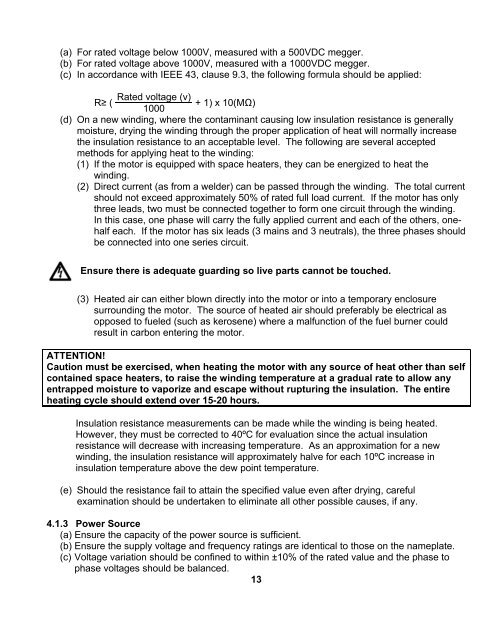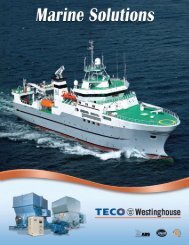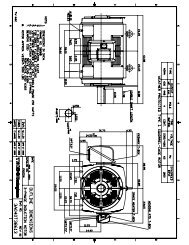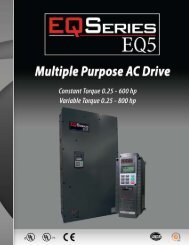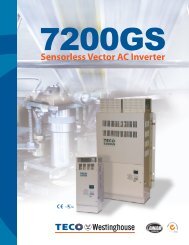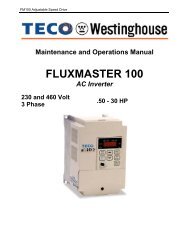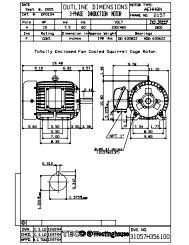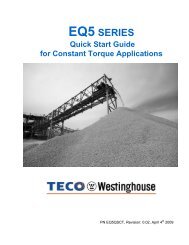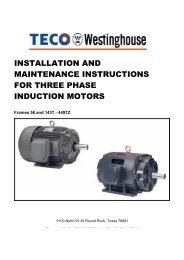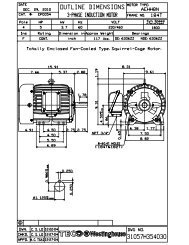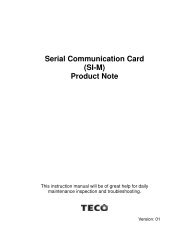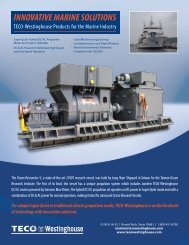OL_P1254 Model (1) - TECO-Westinghouse Motor Company
OL_P1254 Model (1) - TECO-Westinghouse Motor Company
OL_P1254 Model (1) - TECO-Westinghouse Motor Company
Create successful ePaper yourself
Turn your PDF publications into a flip-book with our unique Google optimized e-Paper software.
(a) For rated voltage below 1000V, measured with a 500VDC megger.(b) For rated voltage above 1000V, measured with a 1000VDC megger.(c) In accordance with IEEE 43, clause 9.3, the following formula should be applied:Rated voltage (v)R≥ (+ 1) x 10(MΩ)1000(d) On a new winding, where the contaminant causing low insulation resistance is generallymoisture, drying the winding through the proper application of heat will normally increasethe insulation resistance to an acceptable level. The following are several acceptedmethods for applying heat to the winding:(1) If the motor is equipped with space heaters, they can be energized to heat thewinding.(2) Direct current (as from a welder) can be passed through the winding. The total currentshould not exceed approximately 50% of rated full load current. If the motor has onlythree leads, two must be connected together to form one circuit through the winding.In this case, one phase will carry the fully applied current and each of the others, onehalfeach. If the motor has six leads (3 mains and 3 neutrals), the three phases shouldbe connected into one series circuit.Ensure there is adequate guarding so live parts cannot be touched.(3) Heated air can either blown directly into the motor or into a temporary enclosuresurrounding the motor. The source of heated air should preferably be electrical asopposed to fueled (such as kerosene) where a malfunction of the fuel burner couldresult in carbon entering the motor.ATTENTION!Caution must be exercised, when heating the motor with any source of heat other than selfcontained space heaters, to raise the winding temperature at a gradual rate to allow anyentrapped moisture to vaporize and escape without rupturing the insulation. The entireheating cycle should extend over 15-20 hours.Insulation resistance measurements can be made while the winding is being heated.However, they must be corrected to 40ºC for evaluation since the actual insulationresistance will decrease with increasing temperature. As an approximation for a newwinding, the insulation resistance will approximately halve for each 10ºC increase ininsulation temperature above the dew point temperature.(e) Should the resistance fail to attain the specified value even after drying, carefulexamination should be undertaken to eliminate all other possible causes, if any.4.1.3 Power Source(a) Ensure the capacity of the power source is sufficient.(b) Ensure the supply voltage and frequency ratings are identical to those on the nameplate.(c) Voltage variation should be confined to within ±10% of the rated value and the phase tophase voltages should be balanced.13


